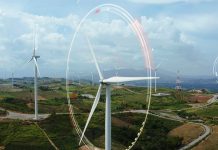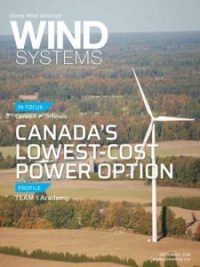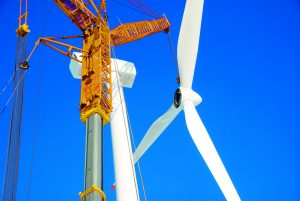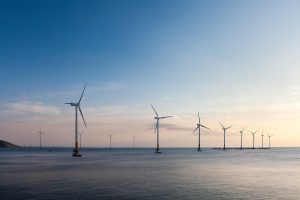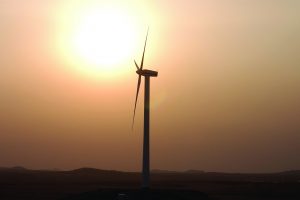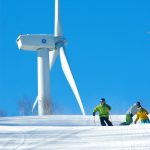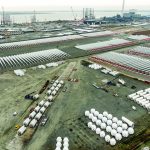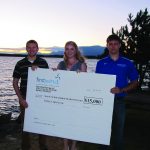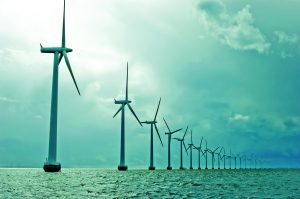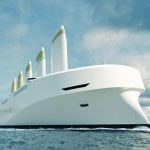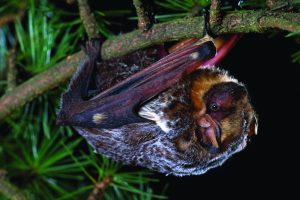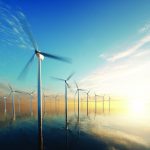As wind turbines age, their ability to efficiently create power starts to decline.
To help fix this problem, wind-farm owners and operators can replace parts to reduce that lost energy production, but that can turn into a costly proposition.
However, another method of increasing power production is being developed at WindSTAR, the National Science Foundation Industry-University Research Center for Wind Energy Science, Research and Technology. It’s now in its fifth year of operation and funded by the National Science Foundation.
By using high performance computing and model-free control algorithms, researchers at WindSTAR are demonstrating that subtle changes in a wind farm’s control software can increase the annual energy production (AEP), thereby lowering the levelized cost of energy (LCOE).
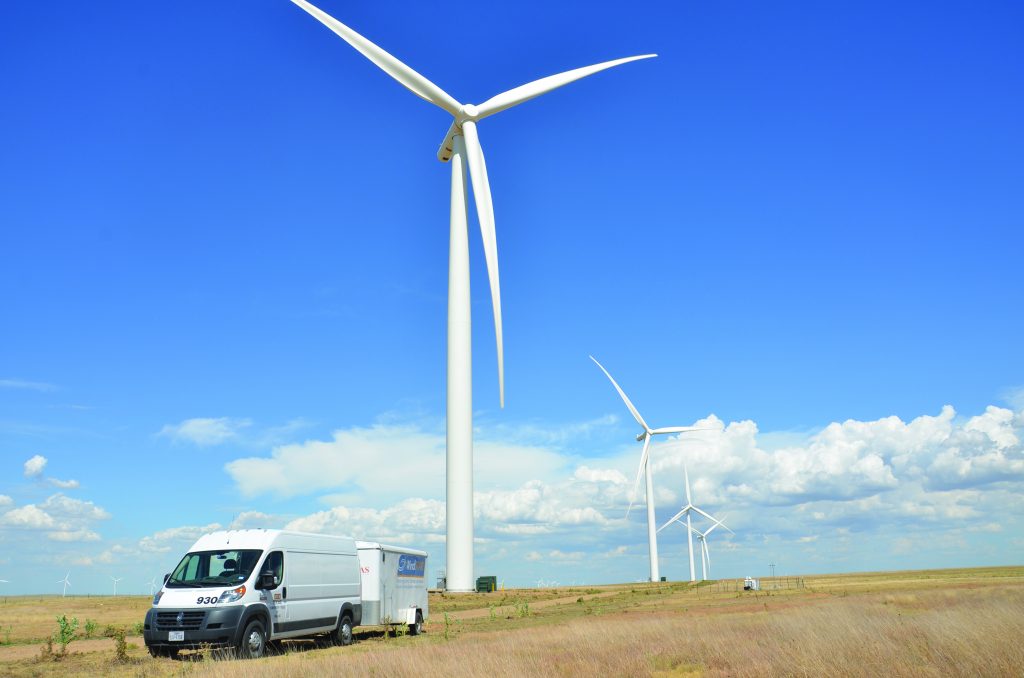
“Let’s say on a wind farm you have 50, 60 turbines, and today they are operated in a way where each turbine tries to extract the maximum amount of power from the wind without consideration of what the impact of doing so is on other turbines,” said Mario A. Rotea, site director at WindSTAR. “The goal of our research is to demonstrate that coordination between properly selected individual turbines allows the wind farm to extract more power than lack of coordination.”
High performance computing
Control algorithms coordinate the action of turbines and simulate them using high performance computing code created by Rotea’s colleague, Stefano Leonardi of the University of Texas at Dallas.
“We needed to run many different cases just to learn how to apply effectively these algorithms,” Leonardi said. “A coordinated approach treats the wind farm as a system. If we change a control variable on an upstream turbine, then the wind impinging the downstream turbines changes.”
“In a wind farm, there are two main mechanisms to increase the AEP relative to the way turbines are controlled,” Rotea said.
Imagine you have two rows of turbines. Row one is in front of the incoming wind. And row two is behind row one. If row one gets all the energy it can possibly extract from the wind, then there may be little left for row two, according to Rotea.
“The question is: How do you set the operating point of the first row so that the sum of the first row and the second row maximizes the total power? That’s what you control,” he said. “This is called derating. You lower the power extracted from row one so there is more wind for row two. Finding that sweet spot is what the control system does.”
The other scenario used to increase AEP is by yawing the turbines, known as wake management, according to Rotea. Wake management uses yawing to redirect the wake.
“If a turbine is in isolation, you’re going to put the rotor plane perpendicular to the wind for extracting energy from the wind, but that also creates a wake that propagates downstream,” he said. “There could be overlap with some of the downstream turbines, and that would reduce the amount of wind the downstream turbines get. Just visualize, as you start yawing the front machine, the wake will be redirected, and if you can put the wake of that machine in a place where there are no turbines, then there will be more wind for the turbines in the middle of the farm.”
Model-free algorithms
Rotea and Leonardi’s research is accomplishing this by using model-free control algorithms — algorithms that do not require a tremendous amount of knowledge of what a particular piece of hardware is doing relative to the wind. These are algorithms that learn as they operate.
Traditionally, control algorithms are created using turbine models that require assumptions on the aerodynamic properties of key components such as the rotor. While this might be advantageous for newer turbine models, it’s often not as effective with older turbines due to inevitable changes as turbines age.
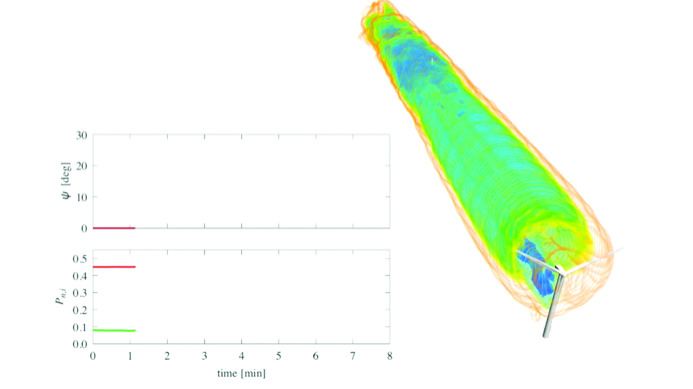
Model-based algorithms don’t always work well at wind farms because of uncertainties in the parameters that influence the way turbines function such as turbulence, sheer, atmospheric stability, temperature, and aging of the blade, according to Leonardi.
“To calculate these quantities with a high degree of accuracy, one needs to actually simulate a very big region, not just the region of the farm,” he said. “Resolving such big domains with a high degree of accuracy is not possible at the moment. Model-free algorithms allow you to mitigate these uncertainties, because the algorithms just look at the effect of a change in a parameter on the output of the optimization functions.”
“The algorithm is model free, so it works whether the atmosphere is stable or unstable or where there’s a lot of turbulence or a little turbulence,” Leonardi said. “Of course, we already know from our physical understanding that there are conditions where it works better than others. But it does not rely on a model, which may have a degree of uncertainty.”
Developing the algorithm required a number of trial and errors. Leonardi’s code was used as a digital wind farm to test and develop the control algorithm. The accuracy of these simulations is encouraging; in fact, in a recent paper, Leonardi and Rotea showed that simulation results agree well with SCADA data of a real wind farm in North Texas.
Power measurement
The way the control system increases AEP is through power measurement, according to Rotea.
“This is what is significant,” he said. “We do not need to measure the wind; we just need to measure the power produced, and then climb up the power curve (hill) until we get to its peak. Imagine that you want to go and do some hiking and you want to climb a mountain. It’s probably going to not be the case that you try to learn the exact topography of that mountain before you climb it. You’re going to go there and look at the peak and start going toward the top without a map. That’s basically what our algorithm is doing. It goes toward the peak without a map.”
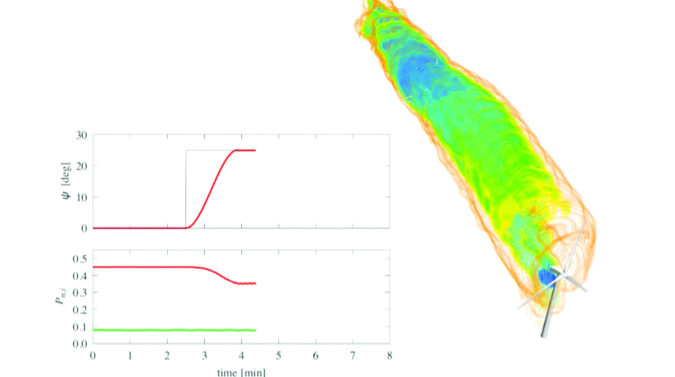
Rotea also likens model-free algorithms to tuning in a radio station in the old analog days.
“You buy a radio, day one, and you say you want to listen to your favorite channel, and let’s say the frequency of that is 90.1. You put the dial at 90.1, and the sound is perfect. That’s the day you bought the radio,” he said. “A year later, you put the dial at 90.1, and the sound quality is not the same. So, what you start doing is you start the dial until the sound quality is as good as you want it for 90.1. You’re close, but not there. This is exactly what we do. When you buy a turbine that is new, you operate it with the controls that come with it. But then, as time evolves, we use some perturbations in order to wiggle different control variables of the turbine to find that sweet spot for that particular condition. That’s a model-free approach.”
But that “wiggling” needs to be done with careful consideration, according to Rotea, because nothing is 100 percent perfect.
“Even though it’s model free, in relation to turbulence, we have to wiggle things at a frequency that does not coincide with the frequencies of the turbulent wind; otherwise we get interference,” he said. “It’s like having two different radio stations with very close frequencies. You cannot separate the two, and you don’t know which one you’re hearing. When the turbulence variations are within the range of the wiggling, we could have problems. And that information we need to have in order to set up the algorithm.”
Model-based vs. model-free
Model-free control algorithms aren’t meant to replace the model strategy, Rotea said.
“I think the two are complementary, and I see a role for both, depending on the age of the farm,” he said. “For a brand-new turbine that is going to be built five years from now, a model-based scheme is probably the best way to go. But for an existing machine that has been on the field, retrofitting a model-free algorithm to re-tune key control system parameters is probably a better approach than re-designing a complete model-based solution.”
Retrofitting older turbines is increasing as many assets enter their second decade of operation. As turbines get older, their aerodynamic characteristics begin to change, according to Rotea.
“There are bugs on blades, ice buildup, erosion,” he said. “And our point in the industry is: Before you change the hardware, change the software. The way we present that to people is as we get older, we don’t do the same things at 50 that we did at 20. We adjust our brain in order to not break a limb. So, we say, ‘why don’t we adjust the brains of the turbine in order to extract maximum efficiency?’ And that’s the space we are trying to occupy with model-free retrofit control.”
The importance of coordination
The goal of Rotea and Leonardi’s research has been to demonstrate that coordination is important, but not in all cases.
“We have seen cases where there is a tradeoff between turbines and how much power you gain,” Rotea said. “But we have a mechanism for understanding that by computer simulation. The second thing, in addition to coordination of turbines, is to try to do that without relying on a deep characterization of the dynamics of the turbine, which is difficult to obtain.”
Leonardi agreed.
“From the beginning, we have been trying to do this, and we needed to run many different cases just to learn how to apply effectively these algorithms,” he said.
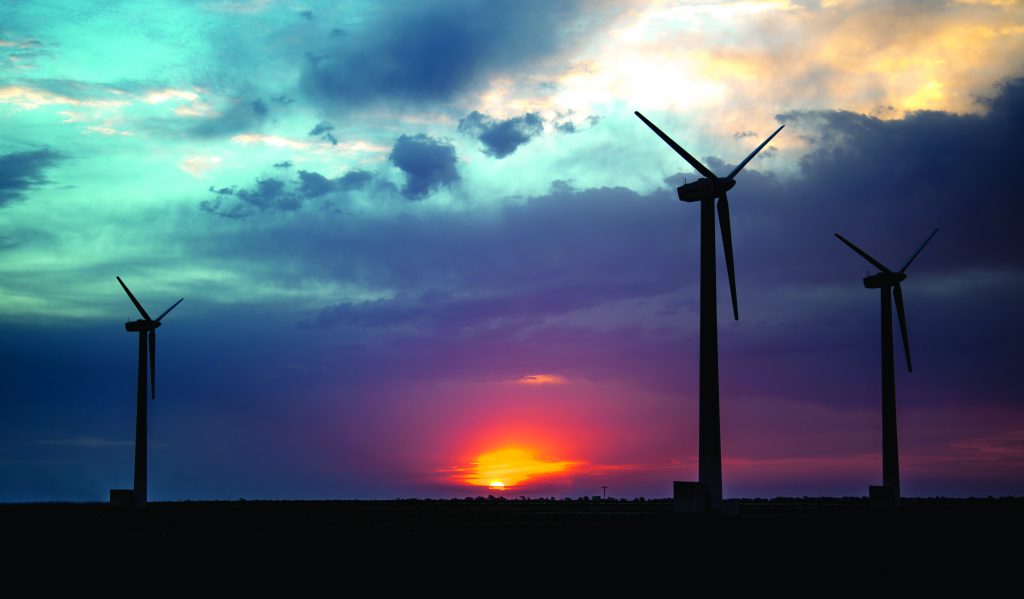 Field tests
Field tests
The next step for the research team is to test it on a real wind farm. Once funding is obtained, a field test will be performed at the SWiFT facility in Lubbock, Texas, operated by Sandia National Laboratories.
“We did a field test on this model-free algorithm on a single turbine, but never on multiple turbines,” Rotea said. “This is important, because the owners and operators who will eventually implement these, they want to understand what is the impact of increasing the annual energy production through these model-free controls and how it affects the structural integrity of the turbine. We have studied it with computer simulations, but there really is no substitute for a field test in order to measure these effects.”
Leonardi said he is confident the simulations will hold up during field tests, and he said he thinks the algorithms will increase in accuracy as the size of the turbines increases.
“One individual turbine has already been done,” he said. “We would like to prove it on a larger scale turbine. SWiFT will give us a good approximation to what is going to be the ideal scenario. As we increase the size of turbines, things should actually be better than what we measure with SWiFT. The gain that we will see at SWiFT is three to four times smaller than what we’d see on full-scale turbines. At least this is what we understood from our studies in the last couple of years.”
Moving forward
Rotea said the wind industry has an opportunity to really move forward not just with his research, but with other areas of research that could revolutionize wind energy, but, for now, it remains underfunded.
“Wind does not have enough participation of academics like us in the development of next generation wind-energy systems,” he said. “There’s a group of people that feels that wind energy is a mature subject, but that’s far from true. There is a tremendous opportunity. This industry needs novel control strategies leading to cost-effective wind plants capable of achieving the penetration targets anticipated in the U.S. (35 percent electricity from wind energy by 2050). It’s ready for transformative research by bringing great tools from control systems, high performance computing, fluid mechanics, structures and materials, and even nanotechnology. The key is to be able to persuade the decision makers to move in that direction.”
The SC18 (the international conference for high performance computing, networking, storage, and analysis) will be in Dallas, Texas, November 11-16, 2018.


















